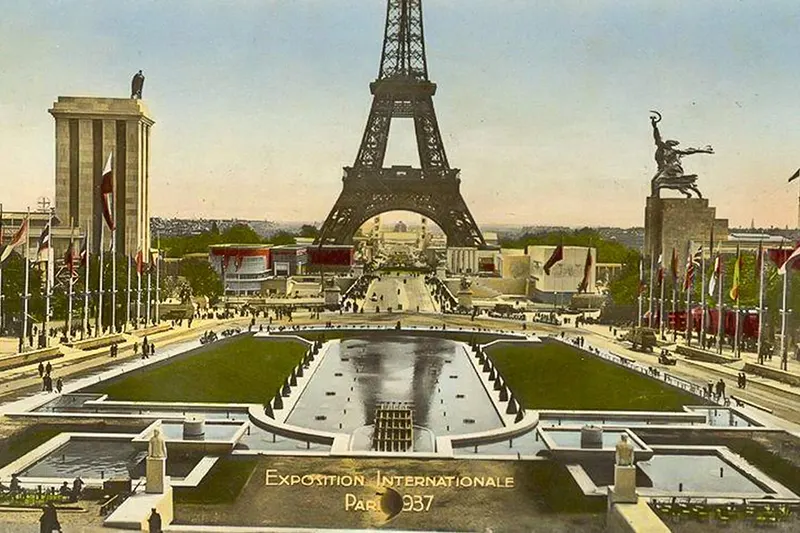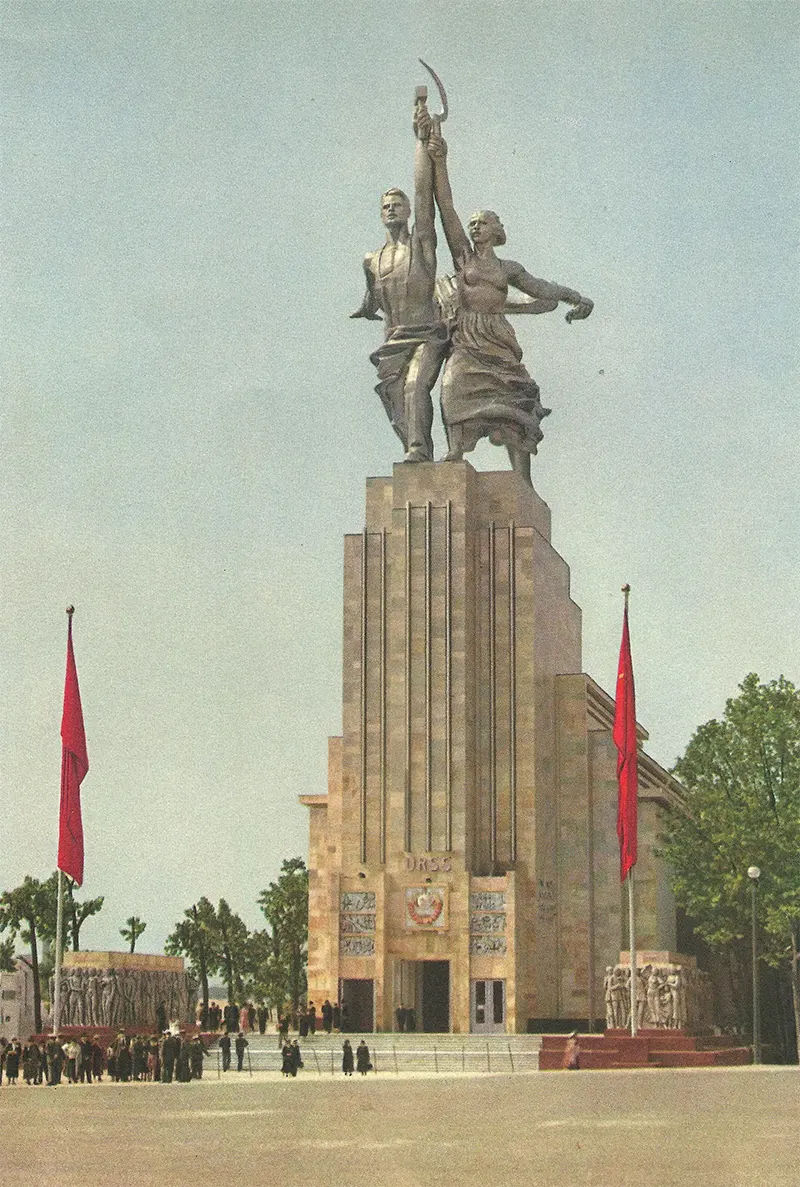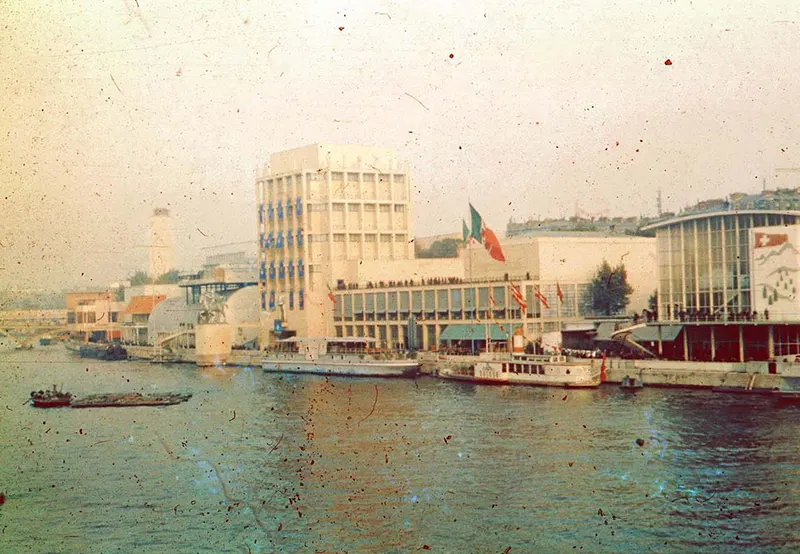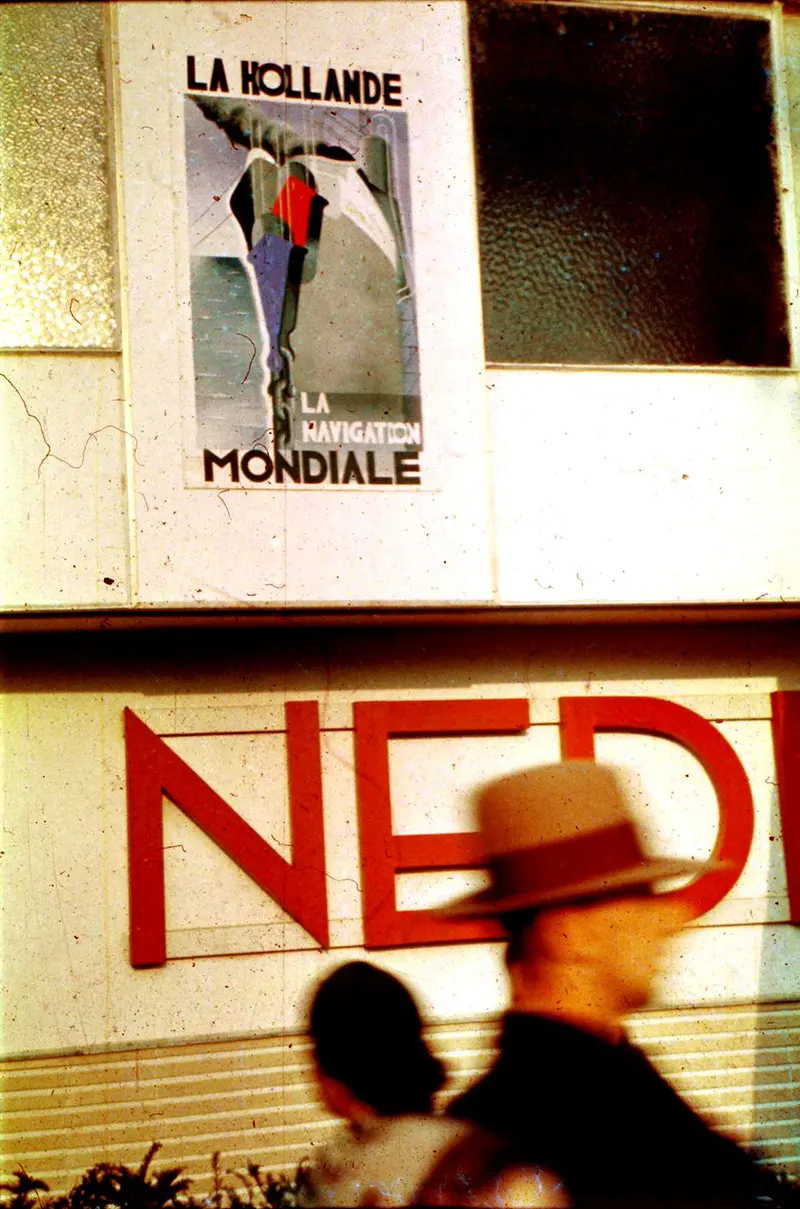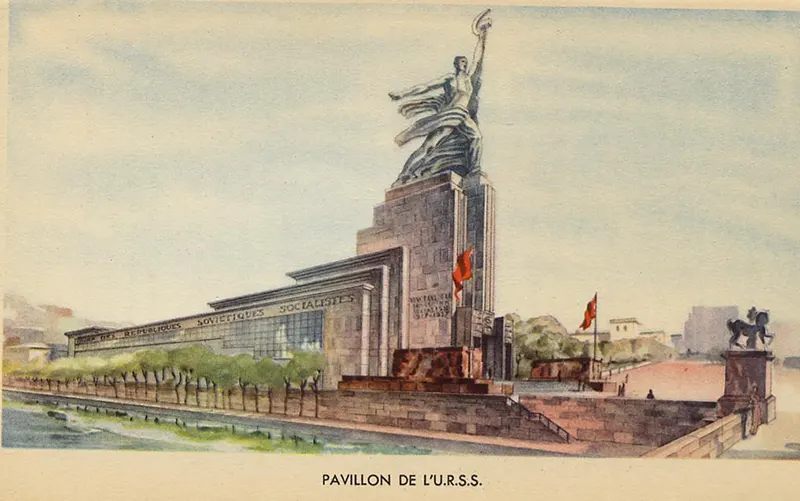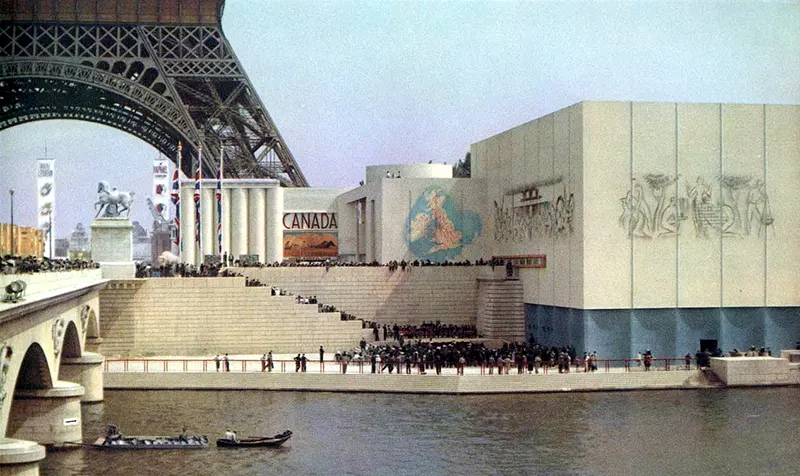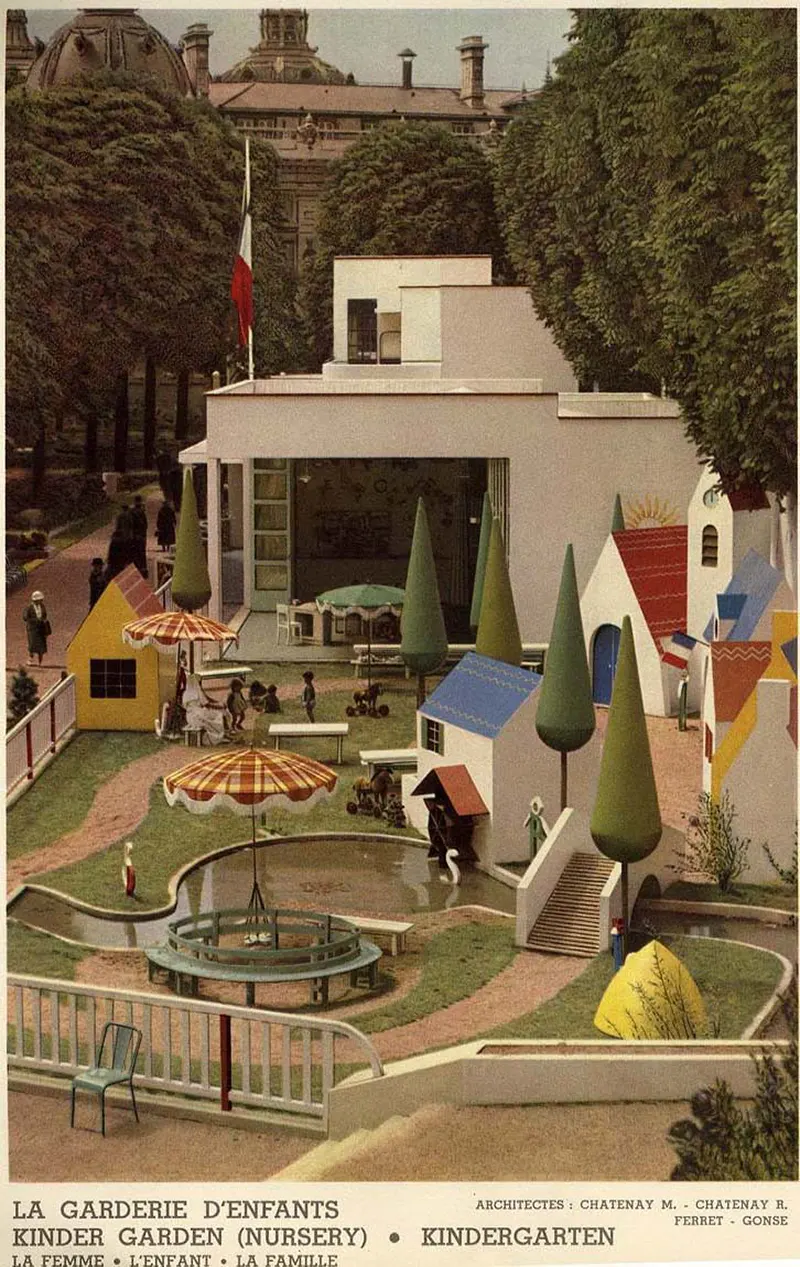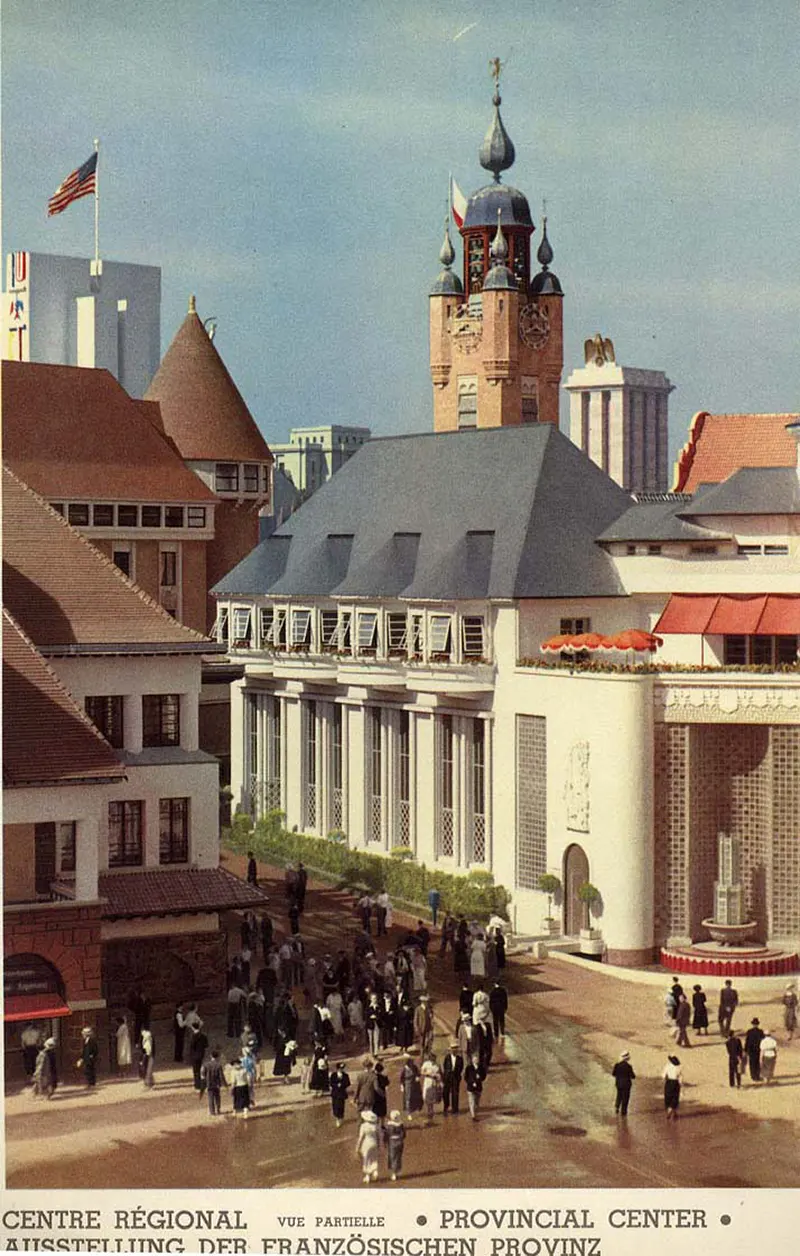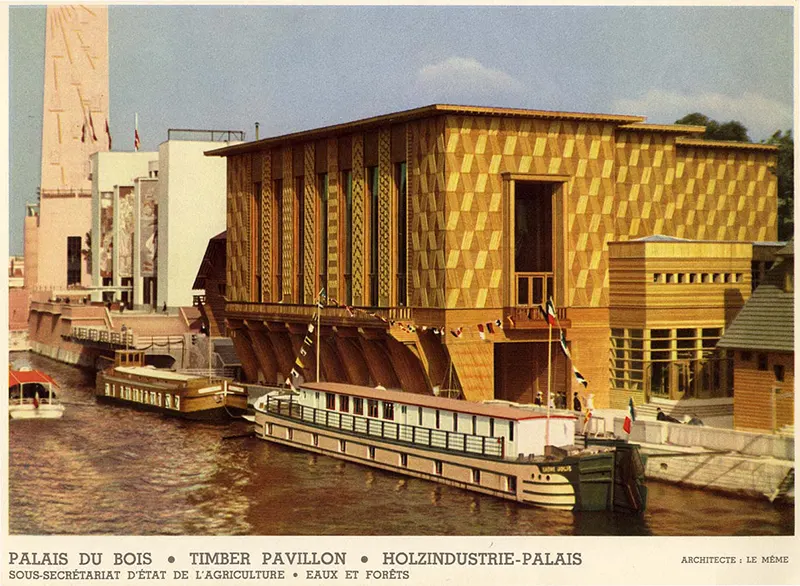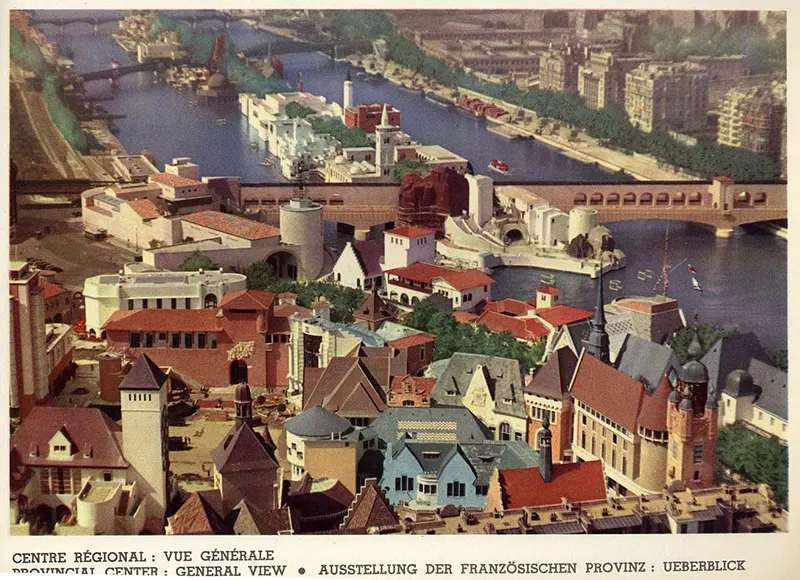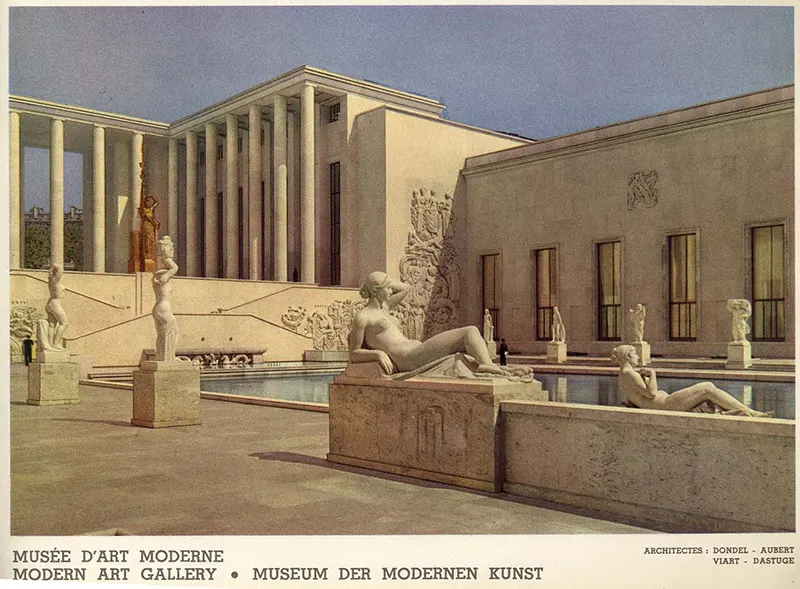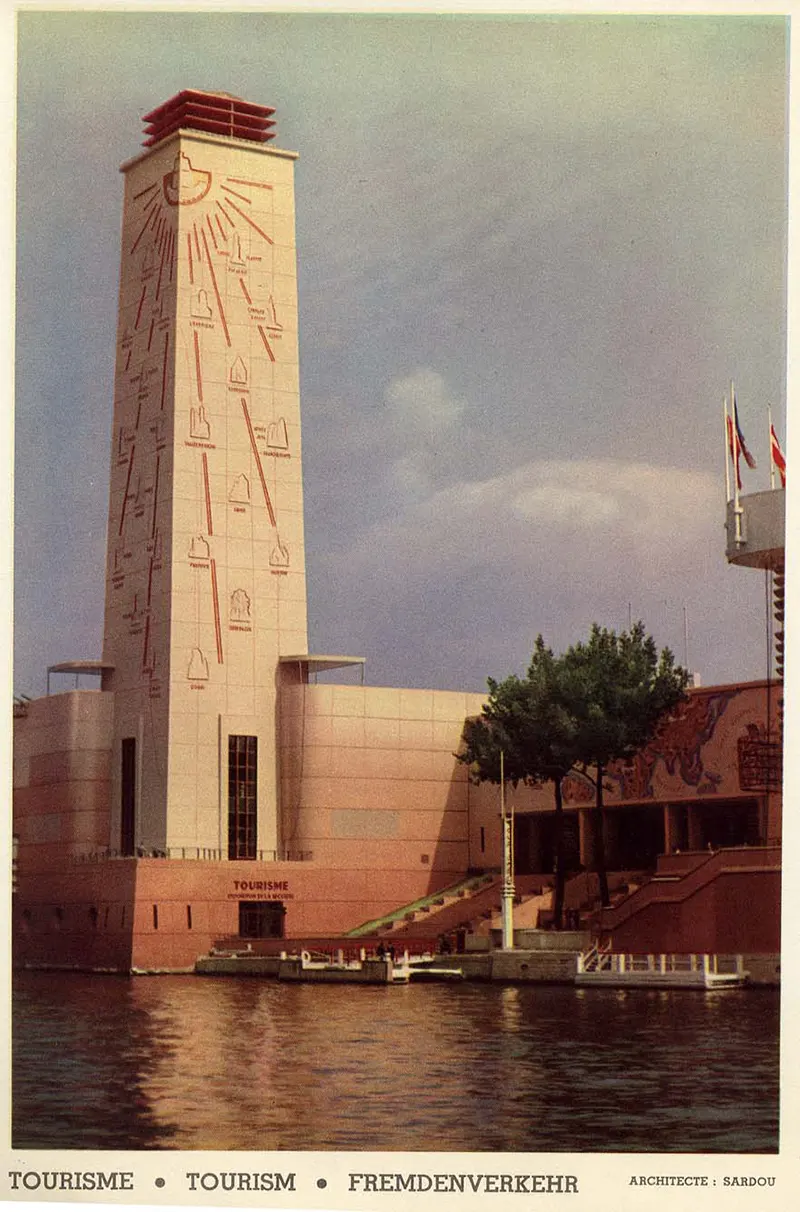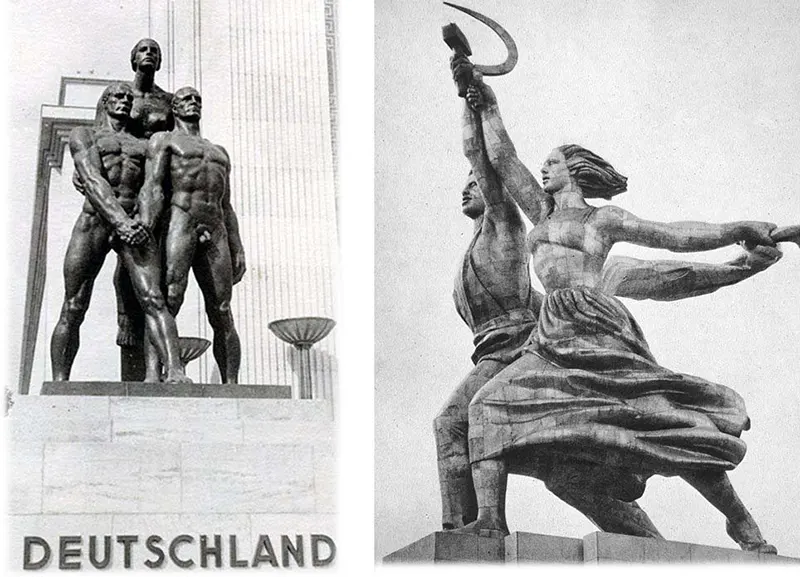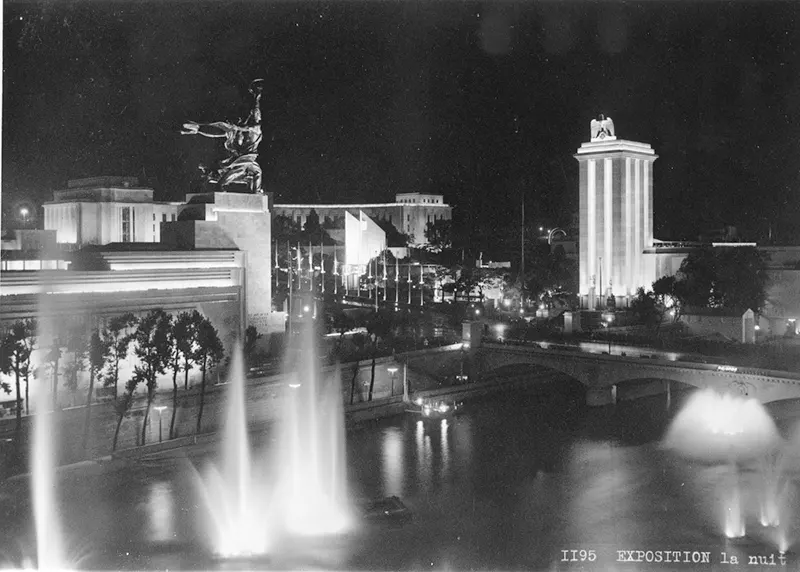The Exposition Internationale would be the final European enactment of the ritual of Peace and Progress before the horrors of the Second World War. The Expo’s centerpiece was the appearance of two equally iconic structures, the German and Soviet Pavilions, facing off across a wide promenade. Their appearance and intent were in direct opposition to the avowed purpose of the 1937 Expo, to promote peaceful co-existence and cooperation among nations. The two buildings, in fact, presented the antithesis of that notion; they were cold, bellicose, and rough in design. The exposition was to showcase the best of the world’s contemporary scientific and technological achievement. Pavilions were devoted to the cinema, to radio, light, railway, flight, refrigeration, and printing. Posters advertising the exposition emphasized it as a coming together of ‘arts et techniques’. By 1937 Europe was beset by political crises. The Second Italo-Abyssinian War had taken place between October 1935 and May 1936. The war showed the limitations of the League of Nations, but despite the meager sanctions the organization imposed on Italy as it embarked upon the military conquest of Ethiopia, Mussolini still used these sanctions as a pretext to curtail Italy’s alliances with Britain and France, and to move closer towards Hitler’s Germany. In March 1936, the German military violated the terms of the Treaty of Versailles and entered the Rhineland; and by October Germany and Italy had agreed to form an axis which would set the scene for the anschluss between Germany and Austria in 1938. The Spanish Civil War had broken out in July 1936, and would see Germany and Italy support the Nationalist forces against the Republicans, who were backed by the Soviet Union. It was a decade full of tensions and ideological clashes. At first, the centerpiece of the exposition was to be a 2,300-foot (700 m) tower (“Phare du Monde”) which was to have a spiraling road to a parking garage located at the top and a hotel and restaurant located above that. The idea was abandoned as it was far too expensive. The most notable pavilions were those of Nazi Germany and the Soviet Union. The organization of the world exhibition had placed the German and the Soviet pavilions directly across from each other. Hitler had desired to withdraw from participation, but his architect Albert Speer convinced him to participate after all, showing Hitler his plans for the German pavilion. Speer later revealed in his autobiographies that he had a clandestine look at the plans for the Soviet pavilion, and had designed the German pavilion to represent a bulwark against Communism. The preparation and construction of the exhibits were plagued by delay. On the opening day of the exhibition, only the German and the Soviet pavilions had been completed. This, as well as the fact that the two pavilions faced each other, turned the exhibition into a competition between the two great ideological rivals. Speer’s pavilion was culminated by a tall tower crowned with the symbols of the Nazi state: an eagle and the swastika. The pavilion was conceived as a monument to “German pride and achievement”. It was to broadcast to the world that a new and powerful Germany had a restored sense of national pride. At night, the pavilion was illuminated by floodlights. Josef Thorak’s sculpture Comradeship stood outside the pavilion, depicting two enormous nude males, clasping hands and standing defiantly side by side, in a pose of mutual defense and “racial camaraderie”. The architect of the Soviet pavilion was Boris Iofan. Vera Mukhina designed the large figurative sculpture on the pavilion. The grand building was topped by Worker and Kolkhoz Woman, a large momentum-exerting statue, of a male worker and a female peasant, their hands together, thrusting a hammer and a sickle. The statue was meant to symbolize the union of workers and peasants. Italy was vying for attention between Nazi Germany and the Soviet Union who presented themselves as great (and opposing) forces to be reckoned with. Italy was a benevolent dictatorship: sunny, open, and Mediterranean, it was founded on discipline, order, and unity. Marcello Piacentini was given the job of designing the pavilion exterior. He used a modern reinforced concrete frame combined with traditional elements such as colonnades, terraces, courts, and galleries, the tower form, Classical rhythms, and the use of Mediterranean marble and stucco. The pavilion was nestled under the Eiffel tower looking out over the Seine to the main part of the Exposition site. Britain had not been expecting such a competitive exposition, and its planned budget was only a small fraction of Germany’s. Frank Pick, the chairman of the Council for Art and Industry, appointed Oliver Hill as architect but told him to avoid modernism and to focus on traditional crafts. The main architectural element of Hill’s pavilion was a large white box, decorated externally with a painted frieze by John Skeaping and internally with giant photographic figures which included Neville Chamberlain fishing. Its contents were crafts objects arranged according to English words which had become loanwords in French, such as “sport” and “weekend”, and included some items by renowned potter William Worrall. There was considerable British criticism that the result was unrepresentative of Britain and compared poorly to the other pavilions’ projections of national strength. The Spanish pavilion was arranged by the President of Spain’s Spanish Republican government and built by the Spanish architect Josep Lluis Sert. It attracted extra attention because the exposition took place during the Spanish Civil War. The pavilion included Pablo Picasso’s Guernica, the now-famous depiction of the horrors of war, as well as Alexander Calder’s sculpture Mercury Fountain and Joan Miró’s painting Catalan peasant in revolt.
(Photo credit: Wikimedia Commons / Online archives of Dr. Chris Mullen: fulltable.com/vts/p/pcc/fairr.htm / Culturedarm.com / Pinterest). Notify me of new posts by email.
Δ Subscribe
